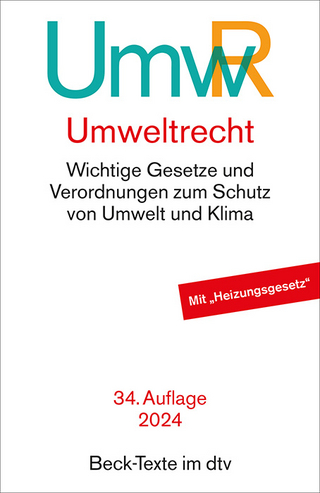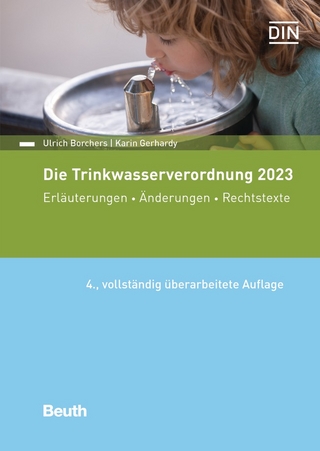
From agricultural to food law
Wageningen Academic Publishers (Verlag)
978-90-8686-251-1 (ISBN)
- Keine Verlagsinformationen verfügbar
- Artikel merken
The differences between agricultural law and food law are becoming progressively blurred. This is only natural because both intend to control that food products placed in the market are safe and respond to a certain standard of quality. In their present form, both are relatively new legal disciplines, evolving and expanding very rapidly and a great number of new and transcendental regulations (and an increasing number of compulsory private rules) are being enacted to respond to new realities.
One of these new realities is the legal protection of quality in food. Once almost exclusively applied to a limited number of traditional well-known products and now extended to many products covered by designations of origin or geographical indications. Another area is food safety, a major concern of the legislator. Food alerts, recalls and withdrawals have been carefully regulated to guarantee a rapid and efficient reaction, but these legal mechanisms appear to be less well-designed when dealing with the unwanted consequences of unjustified alerts. A third topic is food prices and trading conditions, an area that cannot always be completely left to unregulated market-forces due to the special nature of the product involved.
The above issues are analysed by several experts from different legal backgrounds and countries, a varied approach adequate to the hybrid nature of food law.
About the authors 11Introduction 171. Agricultural and food law as innovation engine of Europeanlaw: the new scenario 19Ferdinando Albisinni1.1 Premise 191.2 The first 50 years of Community Agricultural Law and of CommunityFood Law 211.3 Common market and health protection in the first steps ofapproximation 231.4 The '70s: partial approximation and CAP measures 261.5 The '80s: judicial interventionism 291.6 The '90s: food safety as founding pillar of the internal market 301.7 Food quality and food diversity in agricultural legislation 331.8 Food safety crises and the new disciplinary framework 341.9 The 21st century - Regulation No 178/2002 and the systemic dimension 381.10 The reformed CAP 401.11 The regulation on accreditation and market surveillance 421.12 The new scenario: European codes 442. Private law and agricultural food law 45Preventing exclusion of small-scale-farmers through privatestandards in the global food chain - a research agendaKai Purnhagen, Cerkia Barnard, Bernd van der Meulen and Harry Bremmers2.1 Introduction 452.2 Privatisation: retailers as regulators through standards 482.3 Providing incentives to effectively ensure SFF access to global foodmarkets 492.4 Conclusion 523. The new Common Agricultural Policy - objectives relevant tofood law 55Donald Rennie8 From agricultural to food lawTable of contents4. The regulation of quality: beginning of food law 63Mariano Lopez Benitez5. Judicial protection of quality in the case of Parmigiano Reggiano 67Giorgio Bocedi5.1 Parmigiano Reggiano: a noble and historic designation of origin 675.2 The protection of the designation of origin Parmigiano Reggiano 675.2.1 Italy 685.2.2 European Union 685.2.3 International framework 695.3 The 'Consorzio del Formaggio Parmigiano-Reggiano' 705.4 The enforcement of the PDO Parmigiano Reggiano within theEuropean Union 725.4.1 Scope of protection 725.4.2 Enforcement 745.5 The enforcement of the PDO Parmigiano Reggiano outside of theEuropean Union 756. Infringement of protected geographical designations bymeans of evocative behaviours - a critical prospective 77Angel Martinez Gutierrez6.1 Preview 776.2 Introductory remarks on community tutelage of protected geographicalindications 786.3 Approach to the negative dimension of the exclusivity right 806.3.1 Drafting of the rule, a critical remark 806.3.2 Forbidden behaviours 826.4 Evocation as unlawful autonomous conduct 866.4.1 On the concept of 'evocation' 866.4.2 Evocation and semantic level protection of geographicaldesignations 886.4.3 Unfortunate initial exegesis by the CJEU and its recentcorrection at the request of the OHIM 917. The working of the food alert system in Germany 95Market-related measures, RASFF, publication of informationNicola Conte-Salinas7.1 Overview 957.2 Market-related measures 957.2.1 Section 39 LFGB 957.2.2 Case study 96From agricultural to food law 9Table of contents7.3 Publication of information 967.3.1 RASFF 977.3.2 National laws 1007.4 Conclusion 1018. Legal problems arising out of the food alert system in Spainand Europe 103Vicente Rodriguez Fuentes8.1 Introduction 1038.2 Some of the legal problems of food alerts 1048.2.1 The problem of legal standing 1048.2.2 The problem of identifying the responsible authority 1048.2.3. The control of legality of the alert 1058.2.4 The problem of halting the alert 1068.2.5 The problem of removing the effects of the alert 1078.3 Conclusion 1089. The case in the USA: safety alerts and the Reportable FoodRegistry 109Ricardo Carvajal10. Food alert impact and reputation 113Jorge Cachinero10.1 Introduction - the economic importance of reputation 11310.2 The virtuous model of reputation management or how to sail thesea of expressions 11410.3 The management of influence on a political level 12010.3.1 From the open communication channel... 12010.3.2 The management of influence in political spheres 12210.4 Crisis management and online activism 12410.4.1 The changing pattern of food communication 12410.4.2 Risk management: secret ingredient of crisis management 12510.4.3 Managing a crisis in food companies 12610.5 Reputational risks and legal risks 12710.5.1 Litigation in the food sector: new stimulants for old risks 12810.5.2 Communication during litigation and its impact on thereputation of a company or brand 13010.6 Conclusions: be, say and do ... and change your business model 13210 From agricultural to food lawTable of contents11. EU competition law as applied in the agriculture sector 135Nicole Coutrelis11.1 The basic principles of EU competition law 13511.2 The specific application of competition rules in the agriculturesector: a brief historical overview 13711.3 Current situation: provisions of the single CMO 13911.3.1 General rules regarding competition law applying to allundertakings in the agriculture sector: Articles 206-210 and222 of Regulation (EU) No1308/2013 14011.3.2 Specific sectorial provisions of Regulation (EU) No 308/2013 14211.4 To conclude: a few comments 14512. Legal and judicial framework in Italy 147The new Italian regulation of commercial transactions in the food sectorAlessandro Artom12.1 Introduction 14712.2 Scope and essential elements of the contract - Article 62(1) 14812.3 Forbidden contractual terms - Article 62(2) 15112.4 Payment schedules - Article 62(3) 15412.5 Perishable foodstuffs - Article 62(4) 15612.6 Sanctions - Article 62(5), (6) and (7) 15712.7 Monitoring activity and imposition of sanctions - Article 62(8) 15812.8 Reparation and injunction - Article 62(1)0 15812.9 Abrogation - Article 62(11) 15912.10 Effectiveness and implementing decree - Article 62(11-bis) 160Annex 161Index 191
| Reihe/Serie | European Institute for Food Law series ; 10 |
|---|---|
| Sprache | englisch |
| Maße | 170 x 240 mm |
| Gewicht | 1 g |
| Themenwelt | Recht / Steuern ► EU / Internationales Recht |
| Recht / Steuern ► Öffentliches Recht ► Umweltrecht | |
| Recht / Steuern ► Privatrecht / Bürgerliches Recht ► Besonderes Schuldrecht | |
| Recht / Steuern ► Privatrecht / Bürgerliches Recht ► Medizinrecht | |
| Technik | |
| ISBN-10 | 90-8686-251-9 / 9086862519 |
| ISBN-13 | 978-90-8686-251-1 / 9789086862511 |
| Zustand | Neuware |
| Haben Sie eine Frage zum Produkt? |
aus dem Bereich


